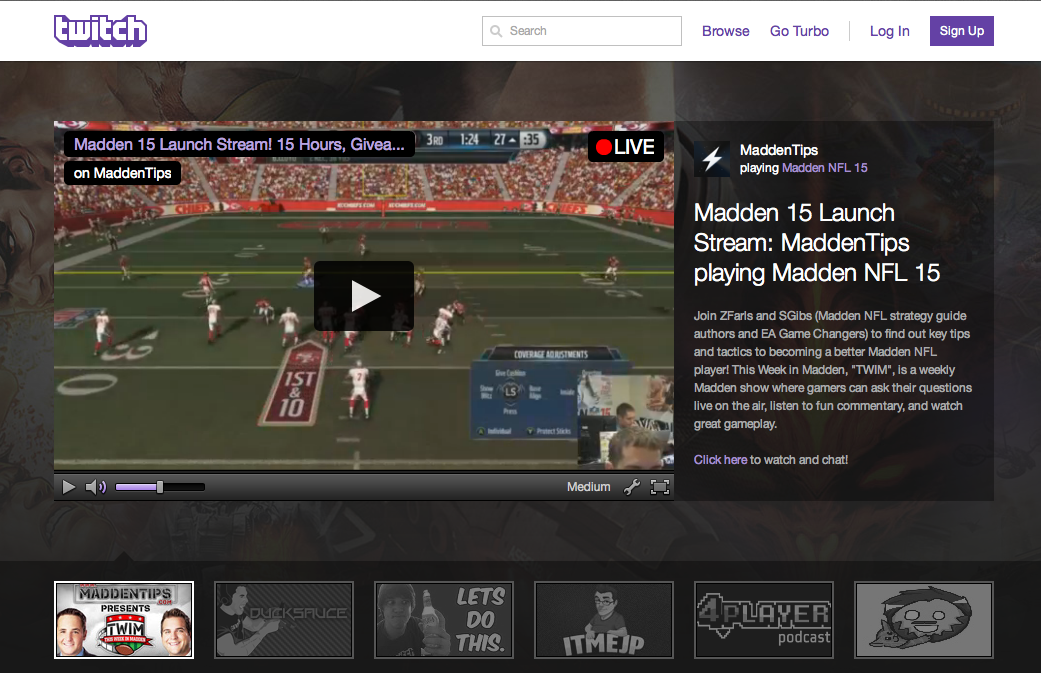This post has not been edited by the GamesBeat staff. Opinions by GamesBeat community writers do not necessarily reflect those of the staff.
 On August 25, 2014, Amazon announced that it was buying Twitch, a website that’s rife with plenty of gamers that love the live and exciting nature of the platform to share their interests. And while Twitch’s description says that more than 45 million folks converge on the site each month to broadcast their gaming prowess – and watch tips from others – Amazon has updated that number to reflect the more than 55 million unique visitors who viewed tons of content on the site in July of 2014.
On August 25, 2014, Amazon announced that it was buying Twitch, a website that’s rife with plenty of gamers that love the live and exciting nature of the platform to share their interests. And while Twitch’s description says that more than 45 million folks converge on the site each month to broadcast their gaming prowess – and watch tips from others – Amazon has updated that number to reflect the more than 55 million unique visitors who viewed tons of content on the site in July of 2014.
That means in one month, 250 million hours of video content was watched – stuff created by greater than 1 million people. Sure, some are the kinds of videos you can find that are very popular on YouTube already, but the live nature and complete gaming-focus of the site are what sets it apart from the hodgepodge of stuff you can find on YouTube.
Why people love gaming together – but alone
The success of sites that bring together those one million broadcasters who represent everything from the solo gamer to those that can fill stadiums full of virtual fans is that it takes a very individualistic activity and makes it uber-social.
Forward-thinking Amazon CEO Jeff Bezos always seems to have his finger right on the pulse of what’s hot and happening right now and soon to be in the future, and isn’t afraid to act upon his hunches. Besides, Twitch is only a young 3-year-old, but its astronomic growth has proved that the activity of recording yourself whilst gaming and believing there are wide audiences of folks who’d love to watch your Minecraft skills, hacks and reactions – for example – isn’t going to fade away anytime soon.
Non-gamers can think of it as having your own little gaming life coach right on hand to help you with the subtle nuances of navigating a field that few folks might be familiar with – be it digging for obsidian or rage-quitting a more violent game.
As technology improved and allowed gamers to not only record their screens at replay and refresh rates that made for easy video watching – but also to plop their live faces in the corner with a microphone decorating their chin to help project their voices better – gaming in a live-streaming fashion or via pre-recorded videos became an amazing phenomena.
Human behavior can’t necessarily be predicted. After all, who would suspect that users would love to sit for hours and watch others laugh and rail against the same game that another person plays? However, that’s exactly the kind of camaraderie that these videos have created – in some ways, they make the gamer feel not so alone when they are checking out the antics of their favorite broadcasters.
Now that Amazon has put its $970 million worth of money where their mouth is, we know that they truly believe in the future of gaming.
